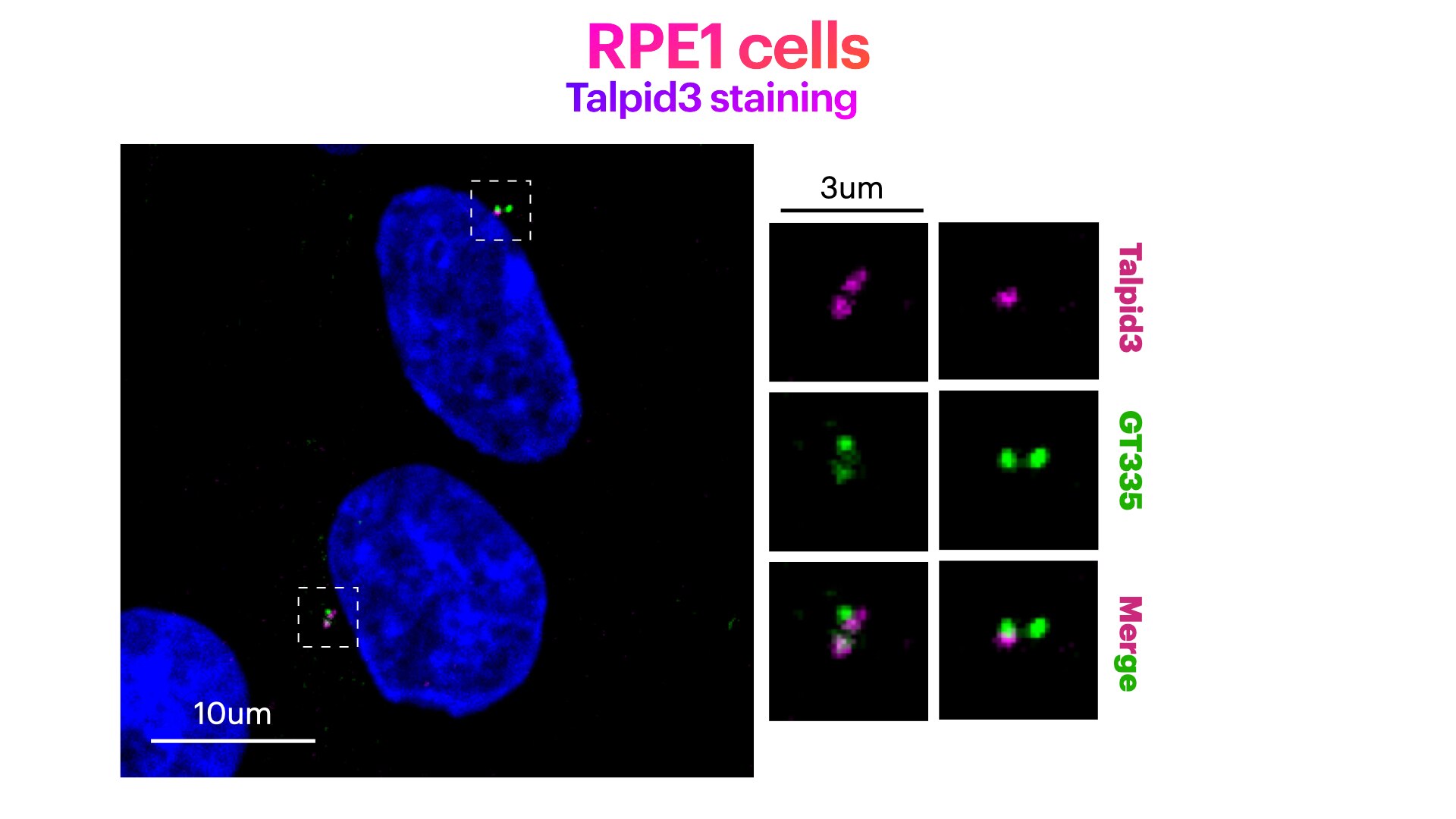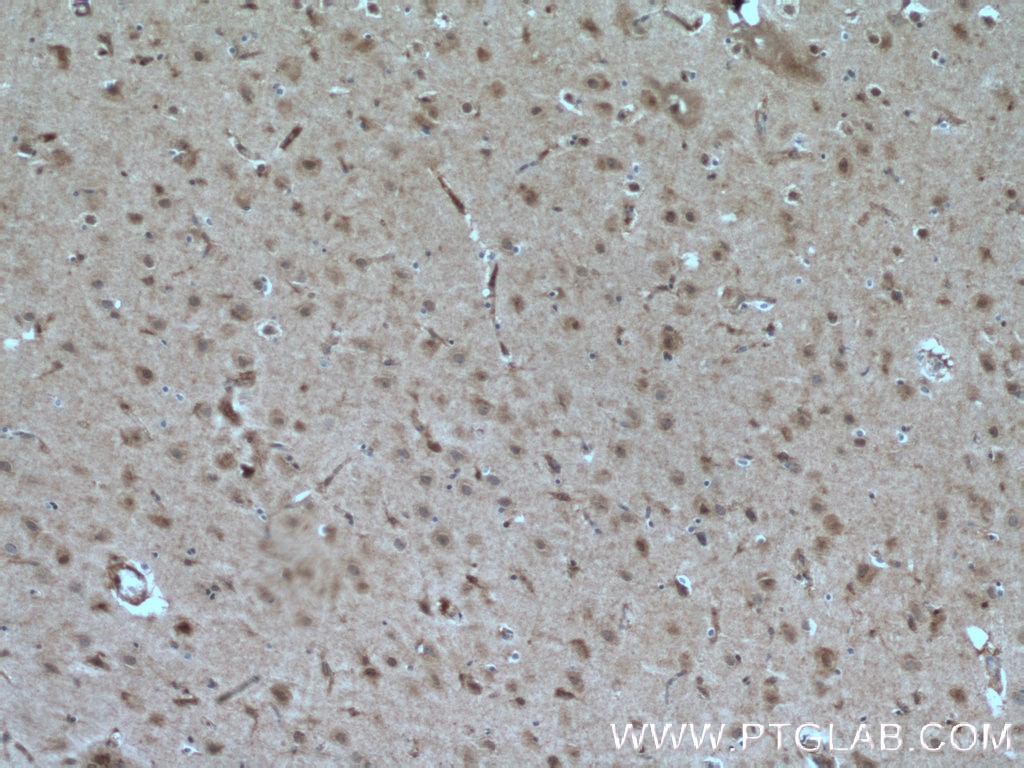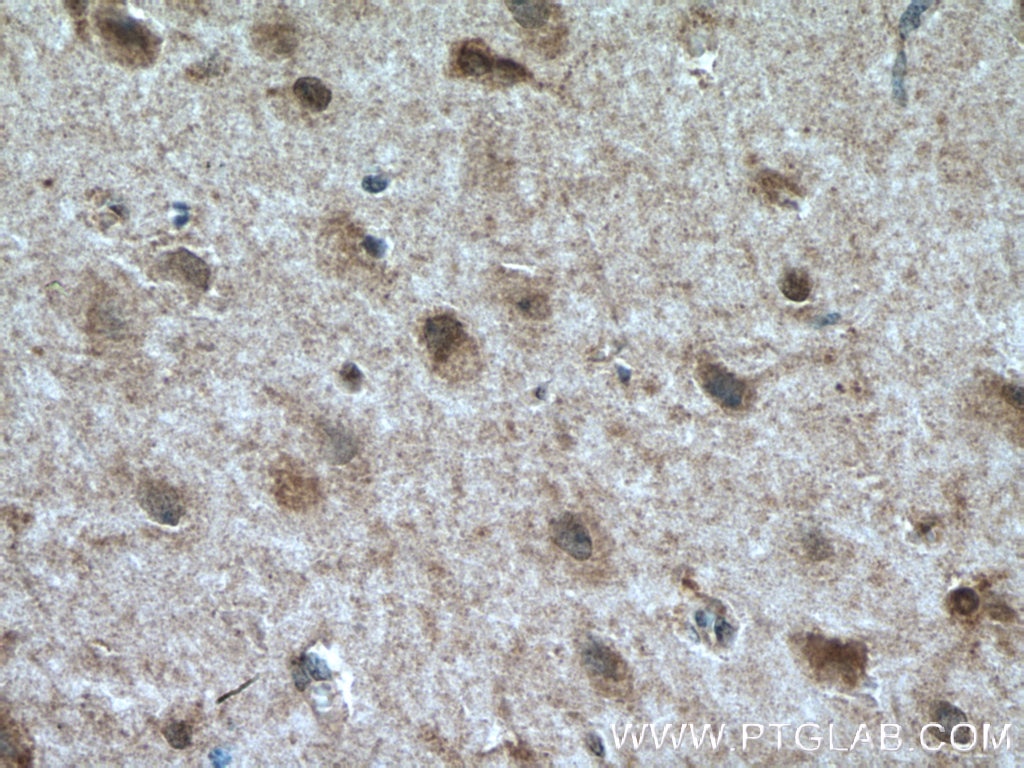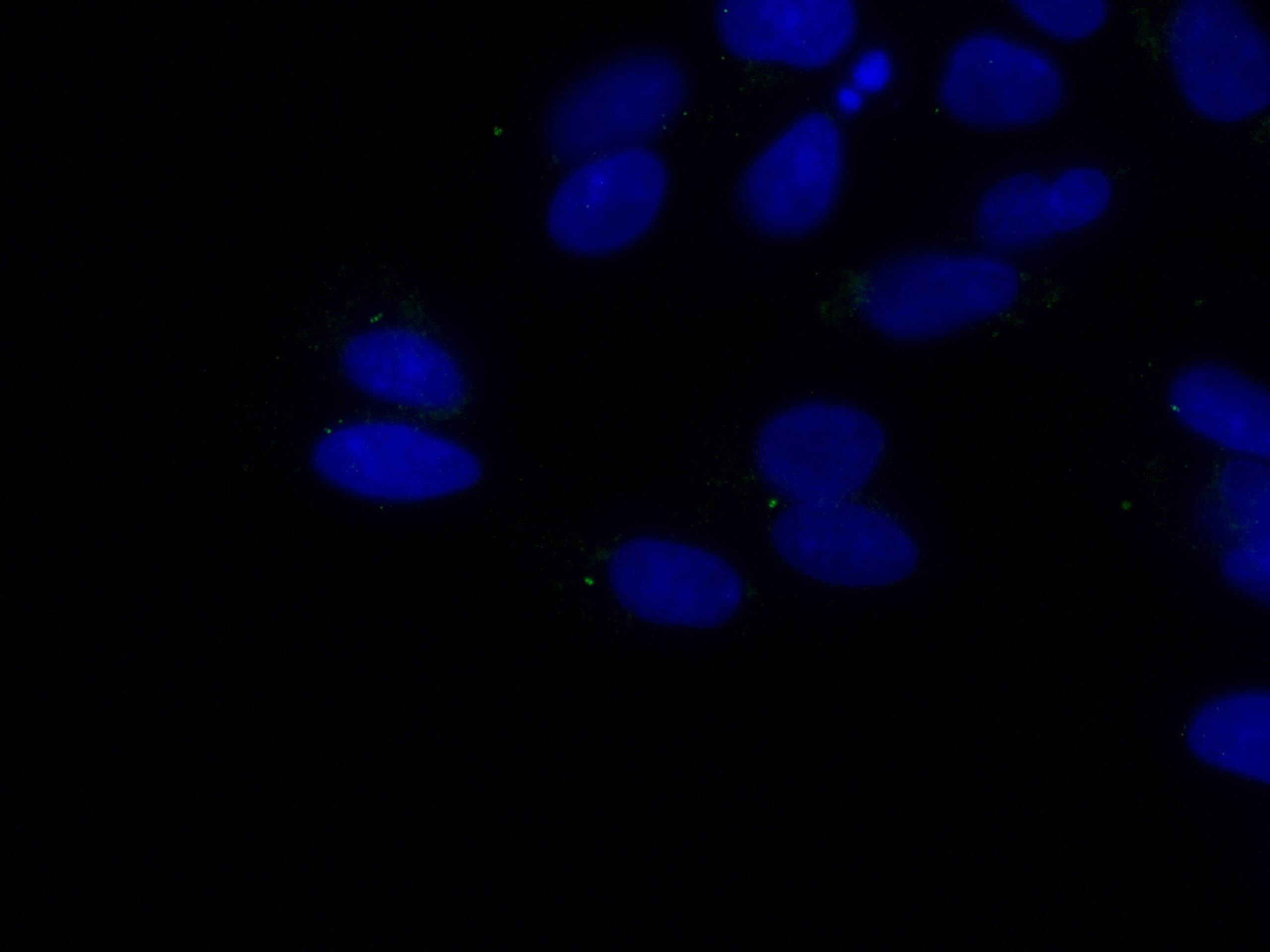- Phare
- Validé par KD/KO
Anticorps Polyclonal de lapin anti-TALPID3
TALPID3 Polyclonal Antibody for IF, IHC, ELISA
Hôte / Isotype
Lapin / IgG
Réactivité testée
canin, Humain, souris et plus (1)
Applications
WB, IHC, IF/ICC, CoIP, ELISA
Conjugaison
Non conjugué
N° de cat : 24421-1-AP
Synonymes
Galerie de données de validation
Applications testées
| Résultats positifs en IHC | tissu cérébral humain, il est suggéré de démasquer l'antigène avec un tampon de TE buffer pH 9.0; (*) À défaut, 'le démasquage de l'antigène peut être 'effectué avec un tampon citrate pH 6,0. |
| Résultats positifs en IF/ICC | cellules MDCK, |
Dilution recommandée
| Application | Dilution |
|---|---|
| Immunohistochimie (IHC) | IHC : 1:50-1:500 |
| Immunofluorescence (IF)/ICC | IF/ICC : 1:1000-1:4000 |
| It is recommended that this reagent should be titrated in each testing system to obtain optimal results. | |
| Sample-dependent, check data in validation data gallery | |
Applications publiées
| KD/KO | See 3 publications below |
| WB | See 4 publications below |
| IF | See 7 publications below |
| CoIP | See 2 publications below |
Informations sur le produit
24421-1-AP cible TALPID3 dans les applications de WB, IHC, IF/ICC, CoIP, ELISA et montre une réactivité avec des échantillons canin, Humain, souris
| Réactivité | canin, Humain, souris |
| Réactivité citée | Humain, souris, Caenorhabditis elegans |
| Hôte / Isotype | Lapin / IgG |
| Clonalité | Polyclonal |
| Type | Anticorps |
| Immunogène | TALPID3 Protéine recombinante Ag19813 |
| Nom complet | KIAA0586 |
| Masse moléculaire calculée | 1533 aa, 169 kDa |
| Numéro d’acquisition GenBank | BC066647 |
| Symbole du gène | TALPID3 |
| Identification du gène (NCBI) | 9786 |
| Conjugaison | Non conjugué |
| Forme | Liquide |
| Méthode de purification | Purification par affinité contre l'antigène |
| Tampon de stockage | PBS avec azoture de sodium à 0,02 % et glycérol à 50 % pH 7,3 |
| Conditions de stockage | Stocker à -20°C. Stable pendant un an après l'expédition. L'aliquotage n'est pas nécessaire pour le stockage à -20oC Les 20ul contiennent 0,1% de BSA. |
Informations générales
KIAA0586 also named as Talpid3 is a 1472 amino-acid protein, which belongs to Talpid3 family. Talpid3 is a gene essential for vertebrate development. Studies in chicken, mouse, zebrafish and human have shown that TALPID3 is a centrosomal protein, mutants null for TALPID3 fail to produce cilia, resulting in far reaching signalling defects such as polydactyly, dorsalised neural tube, craniofacial and vascular defects often due to abnormalities in Hedgehog signal transduction. Talpid3 is absolutely required for the function of both Gli repressor and activator in the intracellular Hedgehog pathway and ciliogenesis. TALPID3 may be identified as a subcellular maker of centrosome and needed to further studied.
Protocole
| Product Specific Protocols | |
|---|---|
| IHC protocol for TALPID3 antibody 24421-1-AP | Download protocol |
| IF protocol for TALPID3 antibody 24421-1-AP | Download protocol |
| Standard Protocols | |
|---|---|
| Click here to view our Standard Protocols |
Publications
| Species | Application | Title |
|---|---|---|
Nat Commun TALPID3 and ANKRD26 selectively orchestrate FBF1 localization and cilia gating.
| ||
Elife TALPID3 controls centrosome and cell polarity and the human ortholog KIAA0586 is mutated in Joubert syndrome (JBTS23). | ||
EMBO Rep Aurora Kinase A proximity map reveals centriolar satellites as regulators of its ciliary function. | ||
Development Centrosomal protein CP110 controls maturation of mother centriole during cilia biogenesis. |
Avis
The reviews below have been submitted by verified Proteintech customers who received an incentive forproviding their feedback.
FH Elisa (Verified Customer) (12-14-2022) | RPE1 cells were fixed in cold methanol for 10' at -20C. Cells were then rehydrated with PBS for 5'. Membrane permeabilization was then performed with 0.1% Triton + 0.1% Tween +0.01%SDS in PBS for 5'. Cells were finally incubated with blocking buffer (5% BSA+ 0.1% Tween in PBS) for 30' at RT. Primary antibody was diluted in blocking buffer 1:200 and incubated for 1h at room temperature. Alexa-488-Anti-rabbit was used as secondary antibody for Talpid3 (1:600 dilution) (1h at room temperature). In pink (Talpid3); in green (GT335, decorating centrioles) and in blue (Hoechst, DNA).
 |




